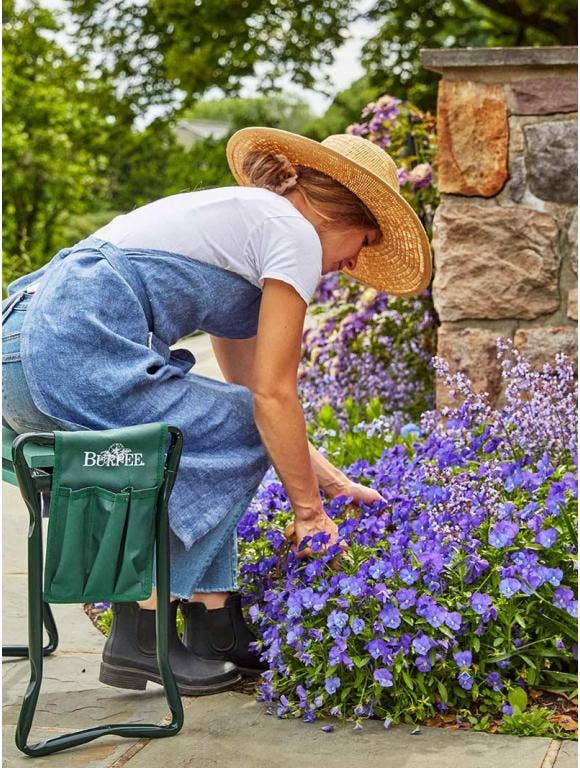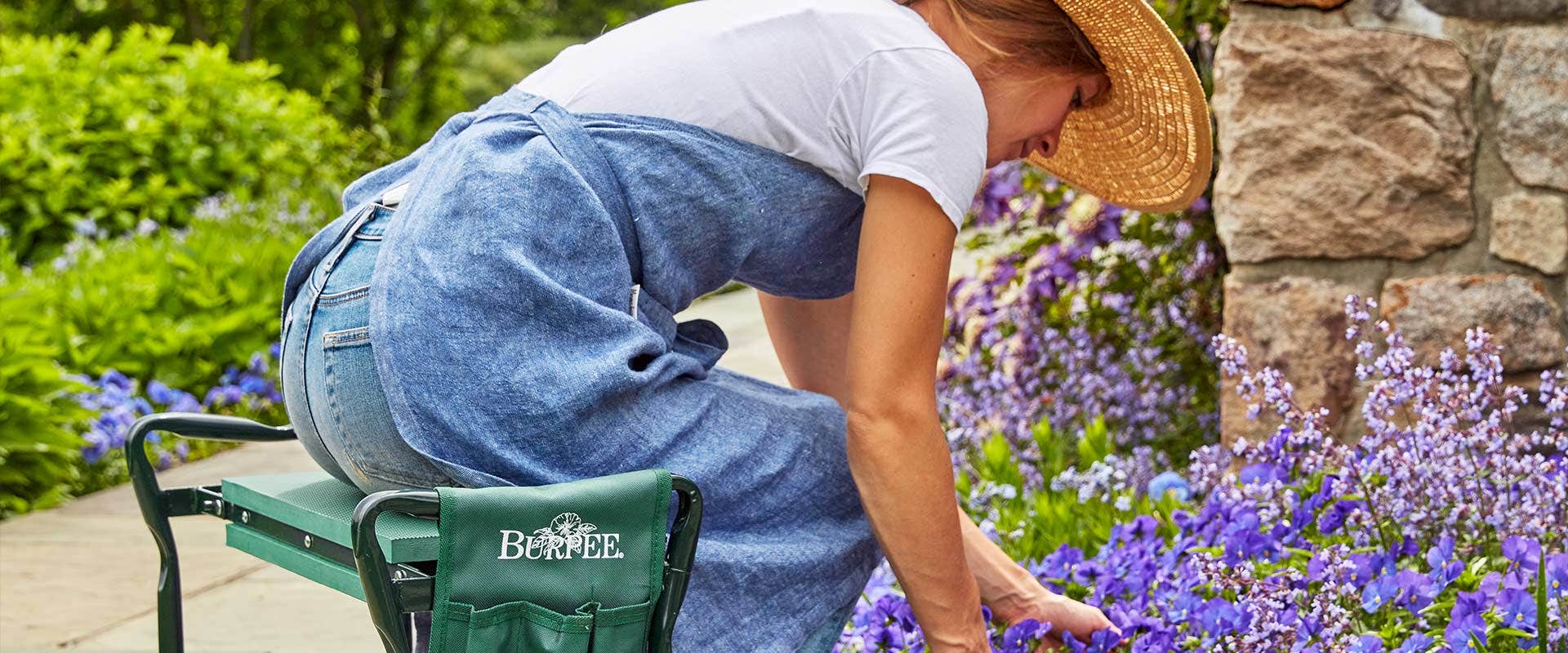


Most people consider color and shapes when choosing plants for garden beds, borders and containers. Their scent is often an afterthought. However, by flipping that thinking and planting a fragrant garden, you can awaken your senses to a new world.
Smell holds a stronger connection to memory than other senses — even sight — and can quickly transport you to a childhood garden, evoke a favorite travel destination or bring you back to a date night when aromatic herbs were the star of an unforgettable meal.
A heady whiff of lilac, the sharp scent of lavender or the perfume of petal-soft peonies can spark new memories for family and friends and elicit sighs of appreciation. Think of it as backyard aromatherapy!
Here's how to create a fragrant garden that blends herbs and flowers for a sensational experience.
Plant Where You Can Enjoy the Fragrance
It's hard to smell fragrant flowers and herbs when they're planted in the far corner of your yard. To fully enjoy them, plant them where you can appreciate the fragrance, such as outside a window where you often read, near a porch or patio that's a gathering place, by a gate you pass through often or along a path where you can allow your fingers to trail through fragrant leaves. Many fragrant plants, such as peonies, roses and carnations, make excellent cut flowers for bouquets that release their perfume indoors.


Incorporate Aromatic Herbs
An easy place to find fragrance is among aromatic herbs. What is an aromatic herb? These are plants that release a fragrance and taste that's often used in cooking, but you can also find them in homemade soaps, bath salts and more. Many favorite scents in aromatherapy collections can be grown right in your garden.
Add Soothing Lavender
Lavender ranks among the bestsellers with its reputation for calming and soothing our senses.
Lavender plants thrive in well-drained soil, especially if it's sandy. When flower heads are ready to bloom like fireworks above mounds of silvery-green foliage, you'll hear the steady, happy buzz of pollinators, too. Extend your bloom time and mix up your shades of purple by planting more than one variety, such as classic 'Munstead,' 'English' or 'Phenomenal,' a newer variety known for hardiness.
Snip flower heads right before flower buds open and let them dry for year-round sachets or decorative bundles.
Embrace Herbs in Food and Aromatherapy
In addition to lavender, plenty of other aromatic herbs can affect our emotions, too. Mint can energize and calm nausea when you crush the leaves and inhale the scent. Add it to drinks (mojitos, anyone?) or teas. Mix it into refreshing salads or toss with fruit. There are dozens of variations on mint, which blend scents and complementary flavors, such as variegated 'Pineapple' mint, citrusy 'Orange' mint and 'Peppermint Chocolate.'
Brushing past monarda (aka bee balm or bergamot) releases a vibrant fragrance you may recognize from Earl Grey tea or essential oil products. It also lures butterflies and hummingbirds with lavender or bright-red blooms.
Herbs Add Aroma and Spice
Stroll through your garden and gently release the scents of herbs by touching the leaves of basil, rosemary, carpets of creeping thyme, spicy oregano and more. These plants can be rock stars in the garden and add bright flavors to your kitchen creations.


Highlight Fragrant Blooms
While some aromatic herbs do blossom, planting flowers known for their fragrant blooms can add a wash of color as well as scent to your garden.
Peonies Perfume the Air
Known for bowl-sized blooms, the fragrance of perennial peonies makes them a cherished heirloom that's often shared through generations of gardeners. Plant a border in a sunny spot around your home or porch or cut wedding-worthy bouquets. Plant classics, such as white 'Immaculee' or blush-pink 'Sarah Bernhardt,' or opt for newer cultivars, such as sturdy 3-foot-tall 'Itoh Bartzella' with lush yellow blossoms.
Stop and Smell the Roses
Roses can anchor a sunny fragrance garden with blooms in dozens of colors. Large pink-petaled English rose 'Queen of Sweden' looks regal, while the peachy blooms of 'Roald Dahl' will bloom continuously through the season.
For a low-maintenance front border or container, check out double-pink 'Sweet Drift' or peachy-pink 'Coral Drift' roses. These rank among the best-scented roses in the Drift line, which is a cross between groundcover and miniature roses.
Sweetly Scented Shrubs
For big fragrance, pick shrubs like lilacs that can perfume your whole yard. Plant one near a window you open in early spring or pick a blend of colors for a hedge that grows 4 to 6 feet tall.
Look for varieties such as 'Bloomerang Dark Purple,' pink 'Scent and Sensibility' and 'Tiny Dancer,' a dwarf lilac for smaller spaces.
Plant a Profusion of Annuals and Perennials
Annuals, including petunias, nicotiana and sweet peas, add long-blooming fragrance to garden borders and planters. Add fragrance to your evening with night bloomers such as moonflowers, four o'clocks and night-blooming jasmine. Consider the creamy white moonflowers the night owl's version of better-known morning glories.
Another favorite for floral arrangements — clove-scented, long-lasting carnations — will come back year after year. Perennial dianthus, which has a similar scent, also comes in a variety of colors, including 'Sweet Black Cherry' and 'Raspberry Surprise.'
Find Fragrant Shade Lovers
If your garden areas don't have sun for most of the day, consider shade-tolerant plants such as lily of the valley, 'Fragrant Falls Peach' begonia and hostas. Most people plant hosta for the foliage and shape, but the blooms on several varieties could transport you somewhere tropical with their surprising scent.
Relax and Breathe Deeply
Use the joyful, evocative scents from your garden as an excuse to spend time near your favorite plants. Brush your hand against leaves and flowers. Pinch sprigs of herbs and rub them between your palms. Pick bouquets of flowers and close your eyes while you inhale slowly and deeply.
To continue enjoying aromatic herbs throughout the year, check out how to store fresh herbs from the garden.



